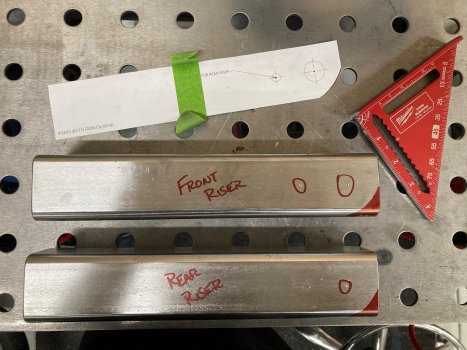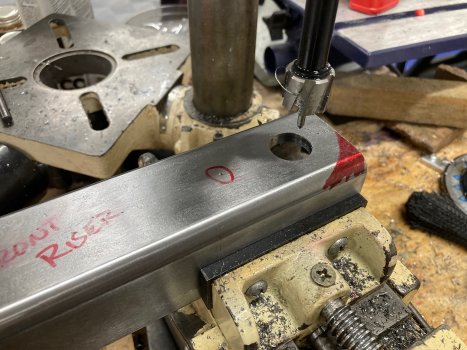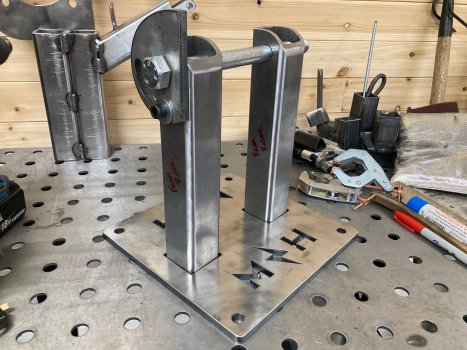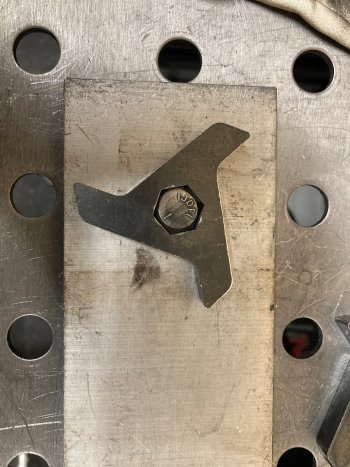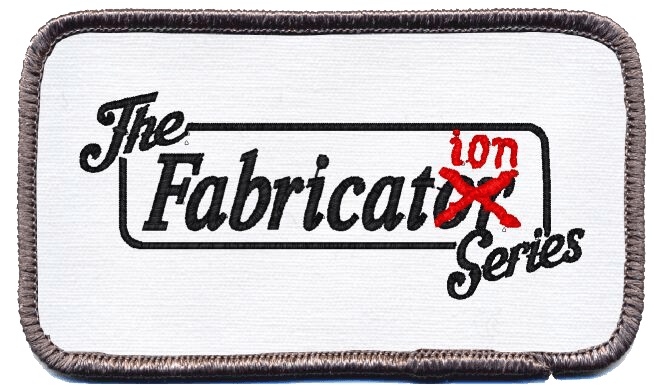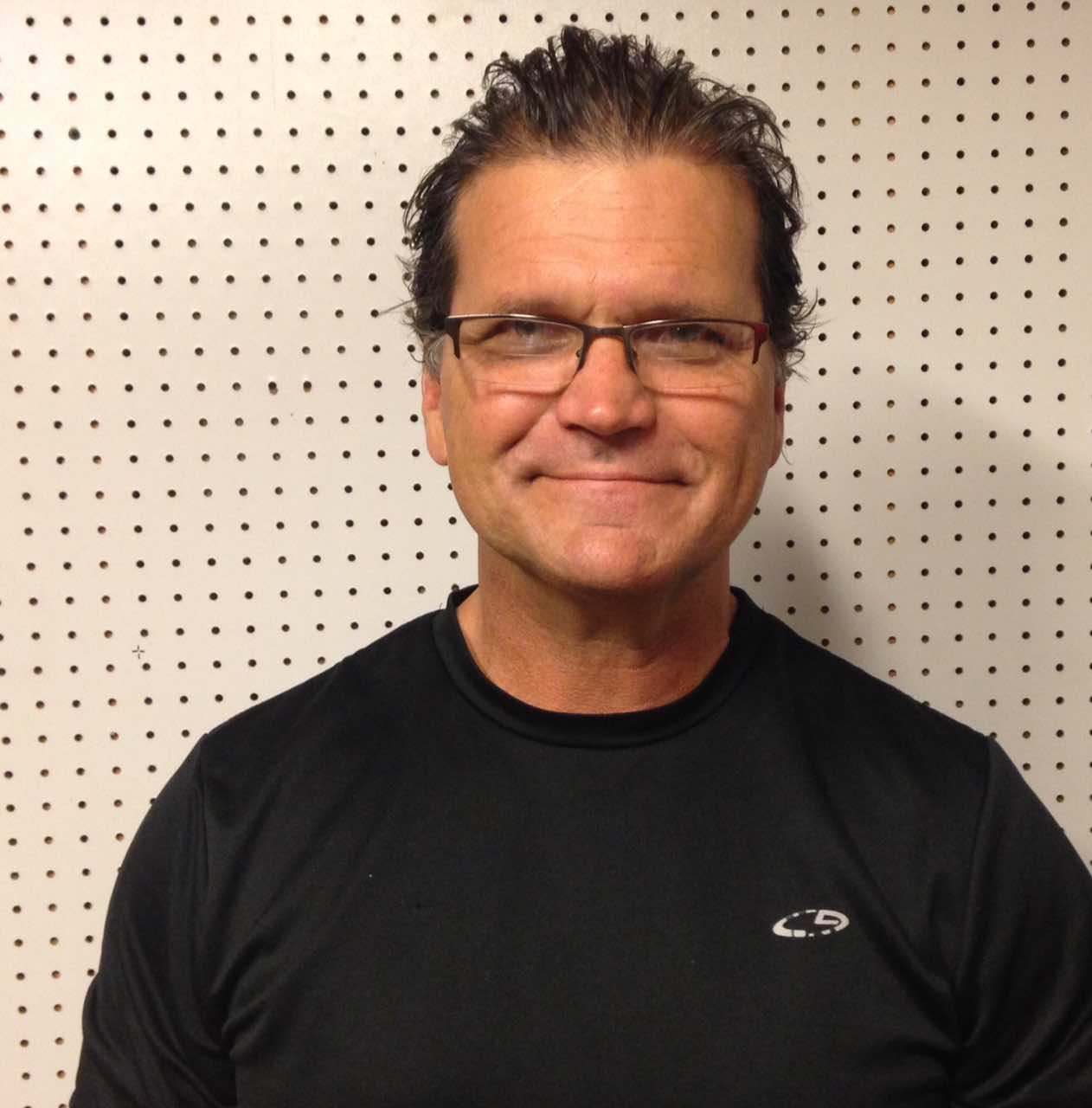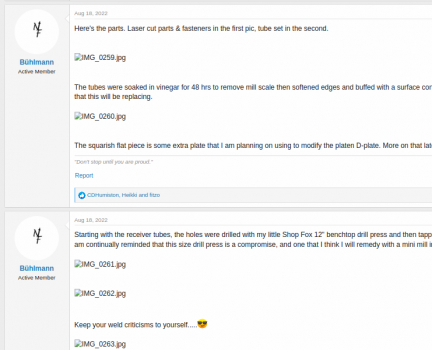Gotta get that motor mounted to get the feel for the balance of the machine! Easy operation, just four bolts. My motor is the IronHorse MTR series premium efficiency AC induction motor, general purpose and inverter rated, 2hp, 3-phase, 208-230/460 VAC, 3600rpm, TEFC, 56C/HC frame, rolled steel, rigid base/C-face mount from Automation Direct. Fantastic company, super easy, lightning fast shipping. Ordered the motor and it was shipped FedEx arrived in two days. I had originally ordered one of their VFDs too, but it was backordered until mid September, so I cancelled and went another route. More on that later. Here it is with the motor mounted:

Heck yeah! Let's get a drive wheel on and see how this thing tracks with a belt! I chose a 6" drive wheel, because the math for SFM comes out perfect for what I want this grinder to be. 6" is not all that popular of a size, and I'm not sure why. The trend is for a 7" wheel and running over 6,000 SFM. That seems like a blade burner to me, maybe more suited for an industrial application. Thin stock and low volume doesn't scream that kind of speed to me. 5" is another popular size, and I'd choose 5" over 7" for making knives. But 6" delivers a high end of around 5600 SFM and is still well suited to low speed work too, in addition to being able to run large diameter contact wheels if I choose to in the future. Anyways, I had difficulty sourcing a 6" drive wheel that didn't cost as much as the rest of my wheels combined, so I plugged my nose and held my breath and bought a VEVOR (Chinesium) branded wheel off of eBay. I came quick, is nicely machined, and by all accounts appears to be a quality made part. Cool! Especially for $53.01.


Wait..... that's not right....bottoms out before shaft is fully engaged. Turn it around?
There we go! Wait...set screw. On the back side. No prob...............shit!!!
No way to access the set screw to lock the drive wheel on. MOTHER$*@#^&%@!!!!!
So....I am returning the VEVOR drive wheel. The good news is that in the month since I bought this one, I see Jose Navarro over at Pheer Grinders has his 6" wheels back in stock. Great! I'd rather have a Pheer drive wheel anyways, even if it IS twice as much. So that's on order as of last night.
I still mocked up the drive wheel I have and hand, put on a belt, and run it by hand to see if I have any severe alignment issues from fabrication & assembly. No issues at all, and I got to play with the primary & secondary tracking planes to see how they affect belt alignment. Sweet setup, and I think I'm going to be very happy with it.


Oh, you forgot it's a tilting grinder that rotates on the same horizontal axis? That was what I didn't like about the Reeder. Beautiful machine, and a lot of well thought out features, but the way they chose to tilt the machine is kinda janky IMO, with the hinge and the kickstand, and the result is the grinder is lower in the horizontal position than it is in the vertical position. I don't know if that is a huge deal or not, but in my head it sure doesn't seem ideal. Especially if I'm going to take the time to station my grinder so it is ergonomically correct for me. I want that to be correct in all positions, not just one. Rotating on a center pinned axis allows that, where a hinge/kickstand setup does not. Personal preference, and YMMV, so please don't be offended if you own a Reeder. I know what kind of machines they are, and I have an idea of what kind of brilliant guy Don is. I looked very, VERY hard at them. This was just one feature that I didn't care for on his machines.

So now we have a fab'd up chassis, complete wheel kit (will swap out drive wheel), and a motor. Let's check the ledger:
Revolution 4 Cut Kit w/weld seams removed: $595.00
Ameribrade wheel kit (2-2" wheels, 4" tracking wheel, & "TBD" accessory): 233.00
Automation Direct IronHorse MTR Series 2HP 3600 RPM 3ph Motor: 262.00
Pheer 6" Drive Wheel: 100.00
Running Total: $1190.00
